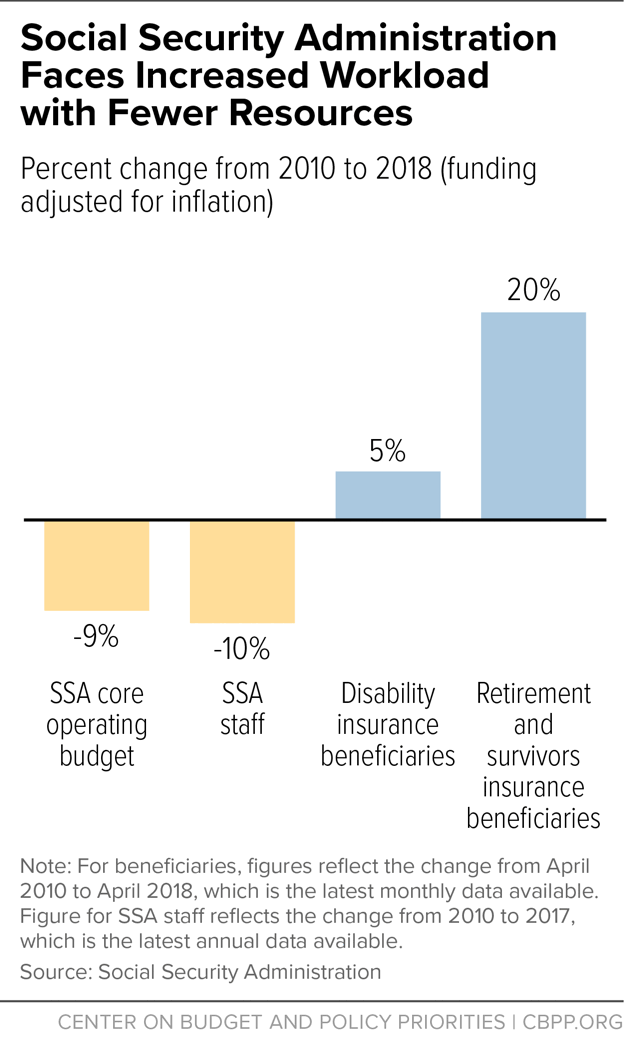BEYOND THE NUMBERS
The House Appropriations Labor, Health and Human Services, and Education Subcommittee may consider this week its 2019 funding bill, which funds the Social Security Administration (SSA) — and, when it does, it needs to continue the recent progress in reversing years of damaging cuts to SSA’s budget.
SSA’s operating budget fell nearly 9 percent between 2010 and 2018, after adjusting for inflation — even as the number of beneficiaries (including retirement, survivors, and disability benefits) grew by nearly 15 percent. The 2011 Budget Control Act’s (BCA) tight annual caps on defense and non-defense discretionary spending drove extremely tight SSA budgets, undermining its customer service by forcing it to close field offices, shorten office hours, and cut staff.
Policymakers increased SSA funding earlier this year, a step in the right direction but not nearly enough to make up the ground SSA has lost since 2010. The 2018 Bipartisan Budget Act raised the BCA budget caps for fiscal years 2018 and 2019, and policymakers responded by boosting SSA’s 2018 operating budget by $480 million or 4.5 percent. However:
- More than half the increase, $280 million, will go for much-needed information technology improvements, which will fund about 40 percent of SSA’s multi-year IT modernization plan.
- Another $100 million will help address the nearly 1-million-case backlog in disability appeals by letting the agency hold roughly 50,000 more hearings.
- Just $100 million of the increase will go toward front-line service for Social Security, Supplemental Security Income, Medicare, and the other programs SSA supports. SSA needs over three times this amount simply to keep up with fixed costs like rent and employee health insurance.
So even with the increased funding, SSA is still struggling to keep up with rising demands, and its customer service problems continue. The agency has started another round of field office closures, prompting bipartisan concern in Congress.
As the House Appropriations Committee noted earlier this year, “The high volume of visitors, combined with factors such as complex workloads, shortened public operating hours, and staff shortages, have led to increased wait times in both field offices and the National 800 number.” These problems reflect nearly a decade in which policymakers starved SSA of resources, and they can’t reverse the cumulative funding cuts in a single year. They should, however, continue to increase SSA’s funding in 2019 to ensure that taxpayers and beneficiaries receive the high-quality service they’ve earned.

